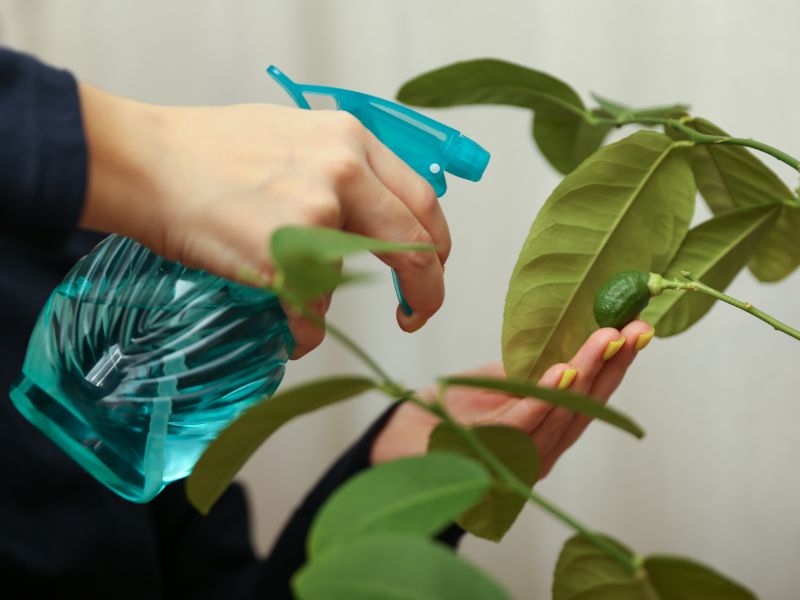We’re passionate about houseplants and we know you are too! That’s why we’ve put together this comprehensive guide on seasonal care for houseplants. We’ll walk you through the dos and don’ts of summer maintenance, winter care, spring fertilization and more.
Whether you’re an experienced plant parent or a budding green thumb, we’re confident our year-round guide will help your indoor garden thrive. Let’s get started!
Understanding Seasonal Needs of Houseplants
To properly care for our houseplants, we’ll need to grasp the different needs they have as the seasons change. Summer’s long days and warm temperatures are perfect for growth, so we’ll water and feed them more. When autumn arrives, we’ll reduce watering and stop fertilizing, allowing them to slow down and prepare for winter.
Winter, often a rest period for plants, calls for minimal watering, no fertilizing, and increased humidity. Come spring, it’s time to restart fertilizing and gradually increase watering, signaling to them that it’s time to grow again. Understanding and responding to these seasonal needs isn’t just a good idea—it’s essential.

Winter Care for Indoor Plants
As we transition our indoor plants into winter, we’ll adjust our care routine to meet their unique needs during this rest period. We’ll reduce watering, as plants enter a dormant stage and need less hydration.
However, maintaining humidity is crucial, so we might use a humidifier or place the plants on a tray with water. We’ll also ensure our plants receive enough light, moving them closer to windows or supplementing them with artificial lights. We’ll keep them away from drafts and heaters to avoid sudden temperature changes.
Pruning isn’t necessary during winter but rotating the plants for even light exposure is. Feedings should be minimized, as the plant’s growth slows down. Proper winter care ensures our plants’ survival and prepares them for spring.
Spring Fertilization and Pruning Tips
Moving into spring, we’ll shift our focus to fertilizing and pruning our houseplants to encourage new growth and vitality. We’ll start by loosening the topsoil and adding a balanced fertilizer, one that’s rich in nitrogen, phosphorus, and potassium. This rejuvenates the plant and aids in robust growth. Remember, over-fertilizing can be harmful, so follow the instructions on the package.
Next is pruning. We’ll remove any dead or yellow leaves to allow more energy for new growth. Prune right above leaf nodes and be careful not to cut the main stem.
It’s a good idea to sterilize your scissors to prevent the spread of disease. These simple spring care tips will ensure our plants look their best and thrive.
Summer Houseplant Maintenance
Having nurtured our houseplants through spring with appropriate fertilization and pruning, we’re now ready to step into summer, a season that demands a different set of maintenance strategies. This period often means more light and heat, which can be both beneficial and harmful to our green friends.
We’ll need to monitor water levels closely, as plants generally require more hydration in warmer temperatures. But remember, overwatering can be just as detrimental as underwatering. Also, it’s a good time to move plants that thrive in sunlight to a brighter location.
However, beware of direct sun as it can harm certain species. Regularly rotate plants for equal light exposure. Let’s keep our houseplants thriving in the summer heat!
Autumn Transition: Preparing Plants for Winter
When summer’s warmth fades into autumn’s coolness, our houseplant care routine undergoes another transition, preparing our leafy companions for the approaching winter. We adjust watering schedules, reducing frequency as plants enter a dormant phase.
They’ll need less water now, as their growth slows. We also start to dial back on the fertilizer. It’s important to ensure our plants aren’t too close to drafty windows, as the cold can damage them. We’ll begin to increase humidity levels around our plants too, to combat the dryness of indoor heating.
Remember, it’s about gradual change, not abrupt shifts. Adapting our care routine in autumn sets our houseplants up for a healthy, happy winter.
We’ve covered the year-round care for houseplants
From winter nurturing to summer maintenance. Remember, plants have seasonal needs just like us. With the right care in winter, spring fertilization and pruning, summer upkeep, and autumn transition, we can keep our houseplants thriving all year long.
They depend on us for their well-being, so let’s make every season a growing season for them. After all, healthy plants make for a healthy home.






